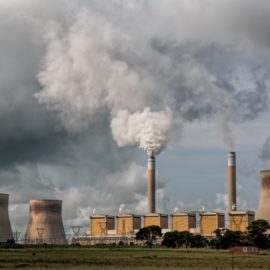
Federal grants can be had to write up but. now the EPA offers help.
Maria Lopez-Nunez knows all too well how difficult obtaining a federal grant can be. Some grant applications run upwards of 100 pages long and are riddled with obscure jargon. Applicants are often required to provide detailed data that can only be acquired by conducting a study or survey. And federal agencies, according to Lopez-Nunez, often prioritize applicants who previously received government grants, giving a leg up to legacy institutions that already have ample resources and frequently get an outsized amount of funding from the government and philanthropies. “So often (federal grants) end up in the hands of universities that might not be directly working with our communities, or big mainstream organizations that only end up giving crumbs to the environmental justice communities that they’re partnering with,” Lopez-Nunez, a veteran activist and deputy director of organizing and advocacy at the environmental justice nonprofit Ironbound Community Corporation, said in an interview. That’s why she was excited that the Biden administration is doing something to help smaller grassroots groups like hers better navigate the complexities of the federal grant making process.
insideclimatenews.org
The EPA is setting up 17 centers.
Last week, the Environmental Protection Agency announced that it is spending $177 million to create 17 technical assistance centers around the country. Those centers aim to help community organizations apply for environmental justice funding made available under both the Bipartisan Infrastructure Law and the Inflation Reduction Act. The IRA, which passed last year, dedicates some $60 billion in federal spending to advance efforts to reduce the nation’s persistent health and economic disparities—though some estimates place that number closer to $47 billion. President Joe Biden’s Justice40 initiative also directs federal agencies to deliver 40 percent of the “overall benefits” of their environmental and energy investments to disadvantaged communities, including from federal infrastructure funds. It’s a historic amount of money, but activists worry it could fail to reach the most vulnerable communities without better training on how to access it. “We know that so many communities across the nation have the solutions to the environmental challenges they face. Unfortunately, many have lacked access or faced barriers when it comes to the crucial federal resources needed to deliver these solutions,” EPA Administrator Michael Regan said in a press release announcing the new centers last week. “Today we’re taking another step to break down these barriers.”
Universities and environmental centers will be the ones to do these technical centers.
The $177 million from the EPA will be split between 17 universities and environmental nonprofits, including the University of Minnesota, New Mexico State University, Deep South Center for Environmental Justice and West Harlem Environmental Action (more commonly known as WE ACT for Environmental Justice). Each group will partner with the Department of Energy and receive at least $10 million to build their capacity as training centers. Chris Dobens, the communications director for WE ACT, said his organization will use its funding to raise awareness of federal grant opportunities and provide technical assistance for community groups on things like grant writing, fundraising and conducting research. “The goal is to help these groups identify environmental and climate justice opportunities in their own communities and successfully secure funding to realize them,” he said in an email. Lopez-Nunez, who also sits on the White House Environmental Justice Advisory Council, said grassroots organizations need that kind of help to compete with bigger, better-resourced institutions for funding. Just last year, her organization applied for the National Oceanic and Atmospheric Administration’s environmental literacy grant for the third time, only to get rejected during the final rounds of the selection process. “I never got it. I’ve been in the 99th percentile three times,” she said. “And we’ve been around for 54 years. It’s not like we’re a new grassroots group that just started.” Lopez-Nunez said she also hopes the training centers can help close the funding gaps faced by nonprofits led by women and people of color—an issue she says exists among all funding sources. For example, one survey found that 75 percent of Black-led organizations received funding from foundations in 2021, compared to 86 percent of white-led groups. Another report found that between 70 to 80 percent of philanthropic funding goes to organizations run by men, even though climate justice work is now largely led by women of color.
A good source for us if we go for EPA grants.



